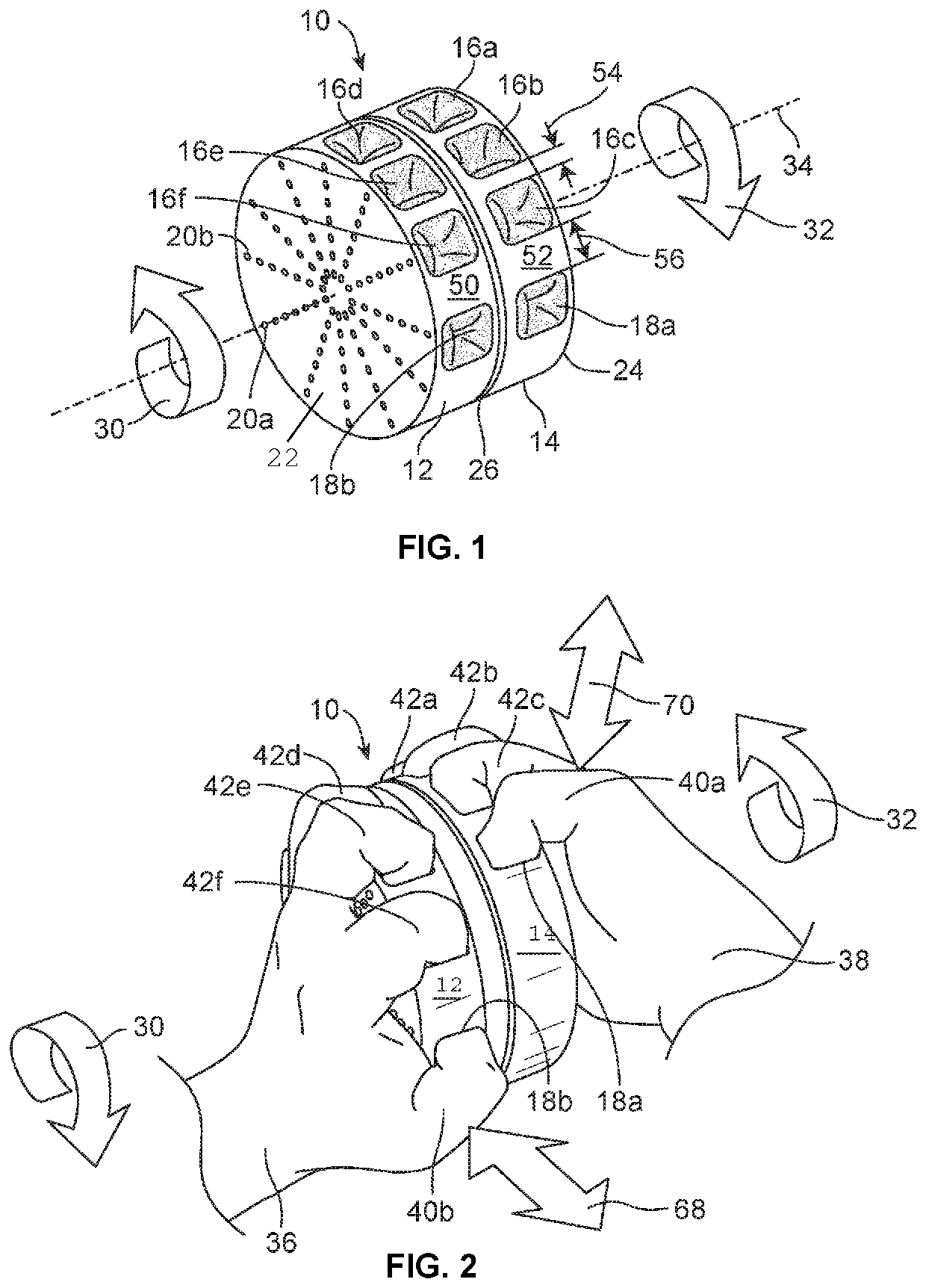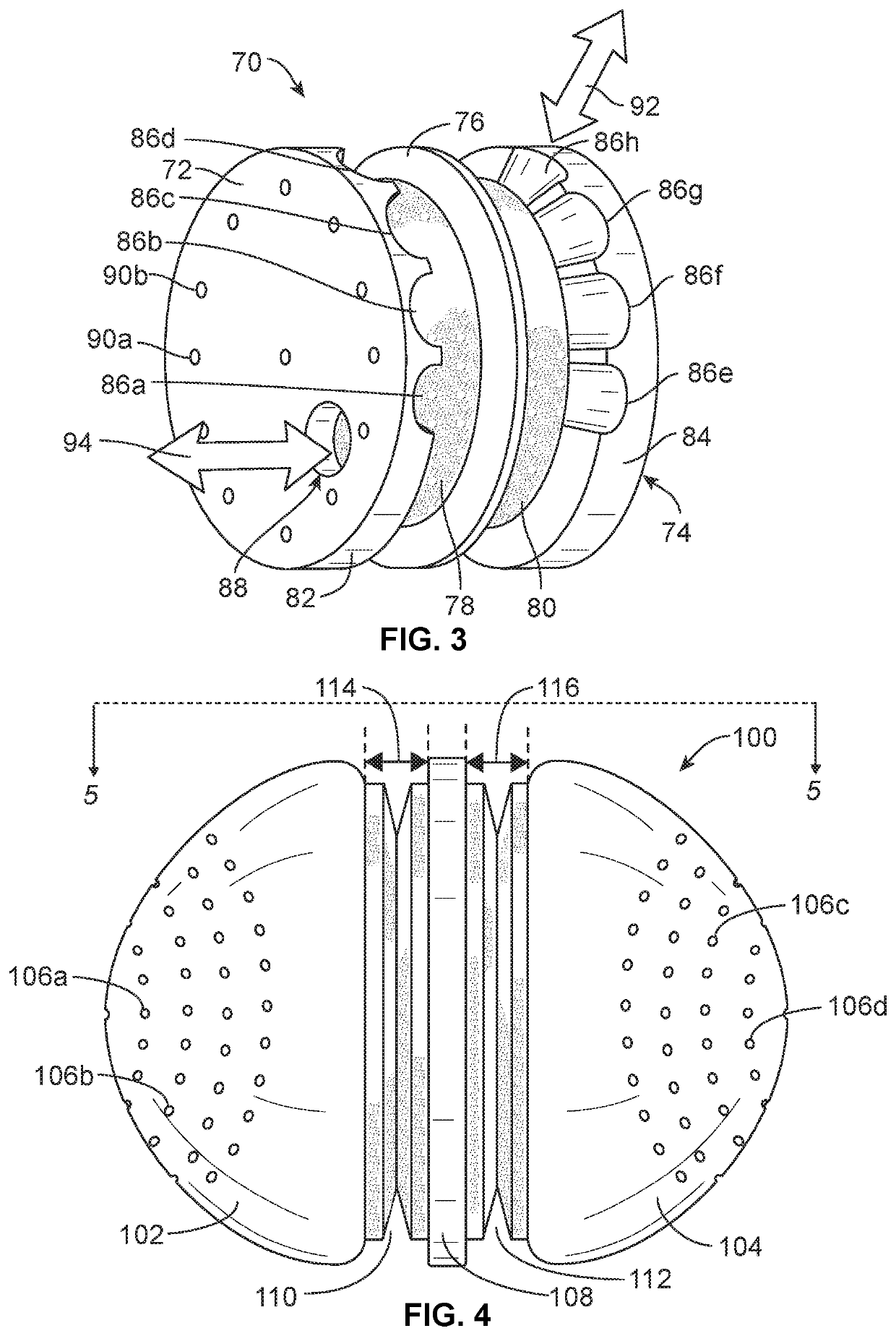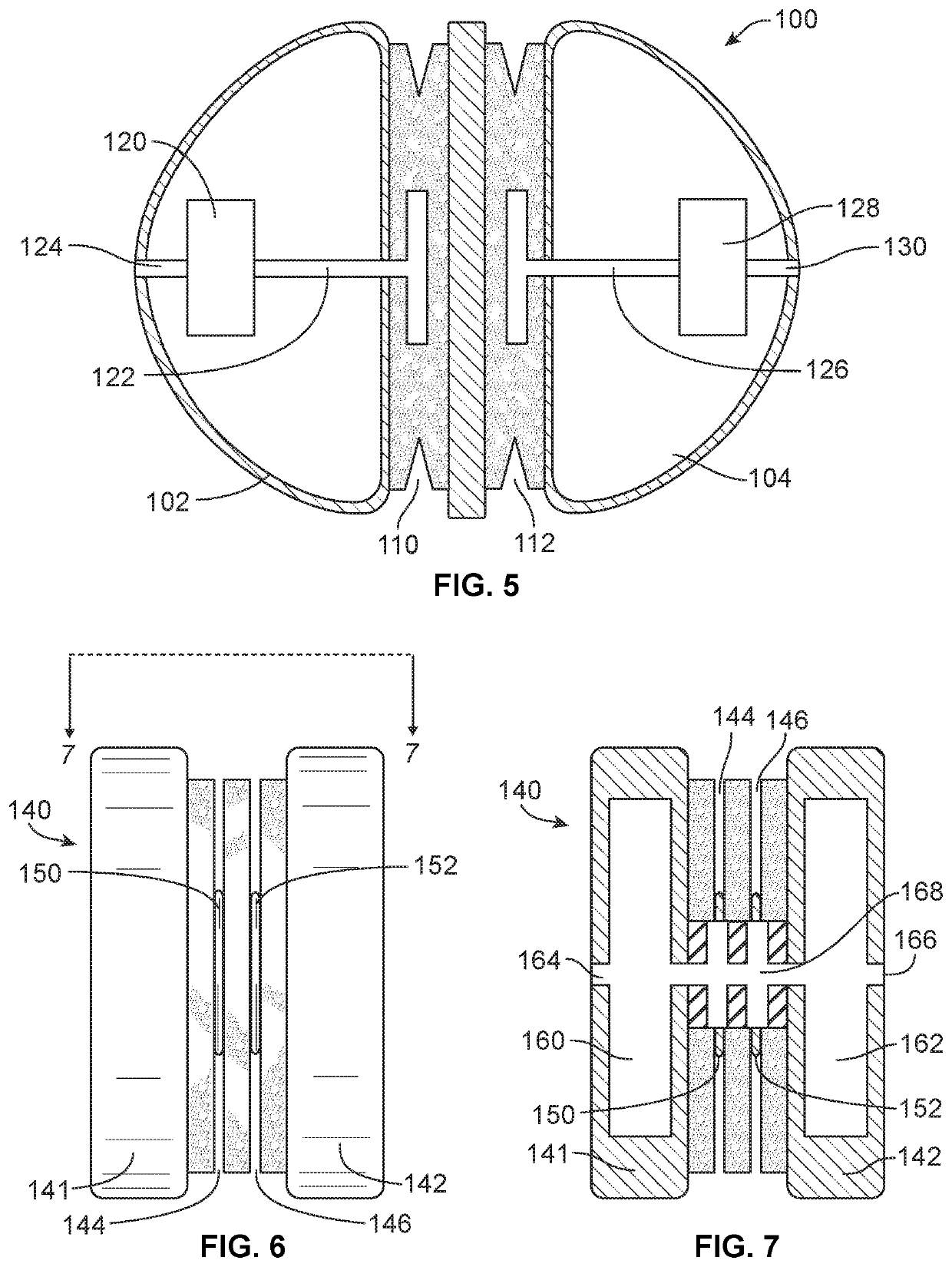Hand cleaning device
a hand cleaning and hand technology, applied in the field of hand cleaning devices, can solve the problems of ineffective hand washing, inability to use appropriate techniques, and still transmit various communicable diseases, and achieve the effect of increasing the surface area of hyponychium skin and reducing the transmission of infectious agents
- Summary
- Abstract
- Description
- Claims
- Application Information
AI Technical Summary
Benefits of technology
Problems solved by technology
Method used
Image
Examples
Embodiment Construction
[0044]Aspects of this disclosure relate to a device for reducing a level of infectious agents present on one or more appendages of a user. Although many descriptive embodiments are described in reference to a human hand, those skilled in the art with the benefit of this disclosure will readily appreciate that these embodiments are not limited to human hands, but rather encompass feet, and other human and non-human appendages. For example, the inventors have envisioned veterinary uses of the disclosed embodiments. Therefore, the reader is advised that the embodiments disclosed herein are not limited to human hands, unless expressly indicated. In certain embodiments, a device may reduce the quantity and / or the infectious capabilities (e.g., through attenuation) of infectious agents present on one or more digits of a user, specifically reducing a level of infectious agents present on an underside of a nail plate, and an area of hyponychium skin between a free margin of the nail plate a...
PUM
 Login to view more
Login to view more Abstract
Description
Claims
Application Information
 Login to view more
Login to view more - R&D Engineer
- R&D Manager
- IP Professional
- Industry Leading Data Capabilities
- Powerful AI technology
- Patent DNA Extraction
Browse by: Latest US Patents, China's latest patents, Technical Efficacy Thesaurus, Application Domain, Technology Topic.
© 2024 PatSnap. All rights reserved.Legal|Privacy policy|Modern Slavery Act Transparency Statement|Sitemap



